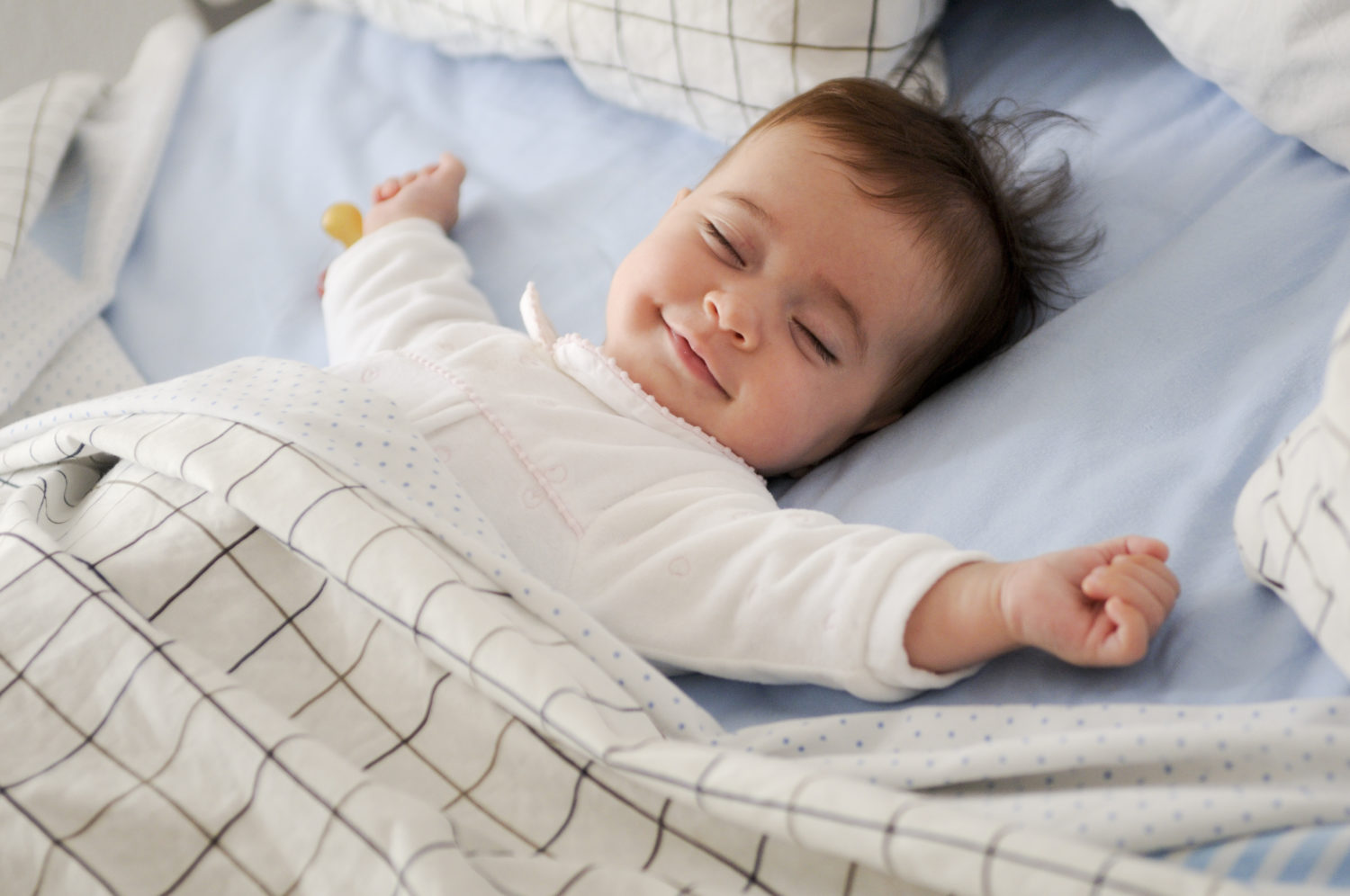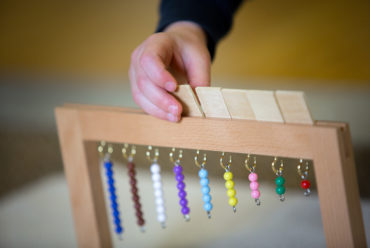Sleep Tips for Implementing a Montessori Bedroom for Your Baby or Toddler
by Nicole Johnson
The Montessori Method has a large focus on education, and many of the principles can be applied to any setting where your child spends time, including the nursery or their bedroom. With a Montessori nursery, you support the principle of encouraging your child’s independence by putting everything within their reach and at their level. This includes all of the furniture, their clothing, their toys, books, and play areas.
 While most traditional nurseries include a crib when a baby or toddler is young, the Montessori nursery means placing a bed on the floor. Placing the bed on the floor supports several Montessori principles: freedom of movement, promoting independence, child empowerment and some feel that a floor bed is a more respectful choice for the child than a crib. But a floor bed also means that for the mobile child, they will be able to get in and out of bed whenever they want. And this can have an impact on your child’s ability to get to sleep, stay asleep, and stay in bed during sleep periods.
While most traditional nurseries include a crib when a baby or toddler is young, the Montessori nursery means placing a bed on the floor. Placing the bed on the floor supports several Montessori principles: freedom of movement, promoting independence, child empowerment and some feel that a floor bed is a more respectful choice for the child than a crib. But a floor bed also means that for the mobile child, they will be able to get in and out of bed whenever they want. And this can have an impact on your child’s ability to get to sleep, stay asleep, and stay in bed during sleep periods.
For those of you who are interested in implementing a Montessori bedroom for your baby or toddler, here are five tips for helping ensure that sleep isn’t negatively impacted.
- Whether or not a floor bed will work for your baby or toddler has a lot to do with your child’s unique sleep history. If your baby frequently wakes at night or struggles with naps, then it might be best to address any sleep issues before moving to a floor bed.
- Your baby or toddler’s personality and temperament will play a role in how easily they adapt to a Montessori floor bed. If your child has a highly energetic or persistent personality, then you may experience some issues with your child being able to settle into bed during sleep time. They may need reinforcement and gentle re-direction back to bed if they are getting up multiple times. Or, you may find they get out of bed to play when they should be sleeping. For some children, this may be a good way for them to wind down and they may go to sleep once they are sleepy. For other children, it could keep them from getting enough sleep.
- Babies and toddlers may not be developmentally ready to understand boundaries like staying in bed. Or, they may understand it, but lack impulse control to actually abide by the rules. You know your child best and try to keep in mind how developmentally able they are to understand a concept like “stay in bed” or “time to sleep.” If you feel like they might struggle with this too much, then you might want to wait to implement a floor bed until they show a little more maturity.
- If your baby or toddler is constantly getting out of bed and not getting enough sleep, then you may want to consider switching back to a crib until they are older. We generally recommend switching from a crib to a bed between two and four years of age. Sleep and good sleep habits are essential to your child’s overall development; so waiting to use a floor bed might be the best option if their sleep is being affected.
- If you would rather not switch back to a crib and you want to stick with the floor bed, then we advise you to be patient with your child as they get used to the new bedroom. Sleep coaching may be tougher and take a little longer, but it can be done. Consistency will be key in helping your child understand the expectations for sleep.
We hope you find these sleep tips helpful if you are moving to a Montessori-inspired nursery or bedroom for your child. Each child and family are unique, and we are very much in favor of families finding what works best for them and their child. If you have moved to a floor bed and are struggling with your child’s sleep, we can help and offer a wide variety of baby and toddler sleep resources. The Baby Sleep Site works with many families worldwide who have a wide variety of parenting philosophies and we are happy to help you find an approach to sleep coaching that fits with your parenting goals and your child’s needs.










No Comments